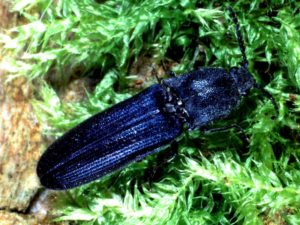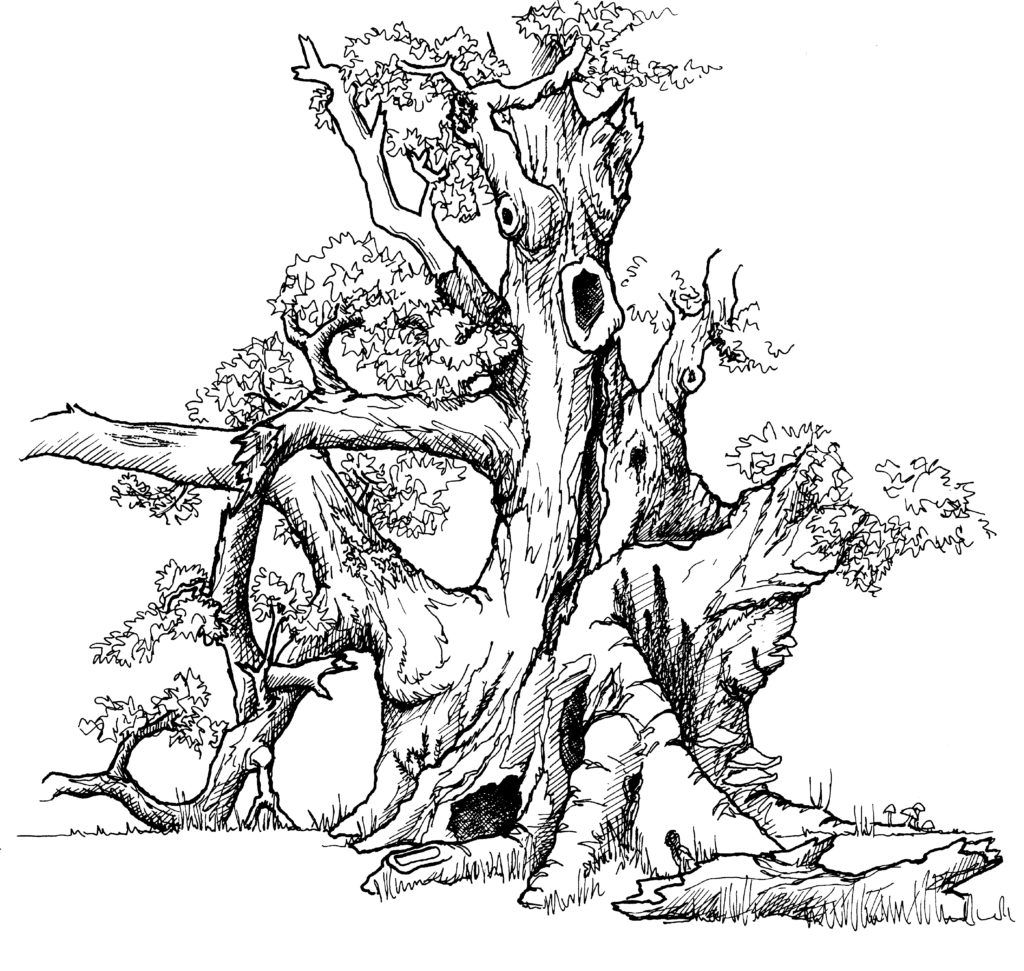Ancient and veteran tree wildlife
Veteran tree biodiversity
One of the most valuable attributes of wood pasture and parkland are the of species that are directly or indirectly dependent on deadwood. These are known as saproxylic species.
Veteran trees provide nutrition, shelter and anchorage to a whole ecosystem of species and the richness of species a tree supports generally increases with age. Deadwood is an ephemeral habitat, it will decompose over time creating rot holes in the branches and hollow trunks that are used as nesting sites by many species of birds bats. Veteran trees support a huge quantity and diversity of invertebrates that can also act as food for nesting animals.
Veteran trees in wood pasture are also particularly valuable for epiphytes such as lichens, mosses and liverworts. These groups are particularly rich on old open grown trees because these trees provide nice light surfaces to colonise, but also because these groups have a slow colonisation and succession rate so it can take decades to develop the rich communities.
These trees are important for fungi that decompose dead wood, fungi that form symbiotic relationships with the tree roots and those that live in the leaves or the bark or even between the living cells of the tree. Fungi feed much of the rest of the species in this ecosystem either directly, with species eating their fruiting bodies or mycelium, and indirectly through softening up the dead wood which enables it to be digested by others.
Each feature on the list of veteran tree features adds to the diversity of micro-habitats that the tree provides, so also the variety of wildlife it accommodates.
The role of fungi
Fungi have developed this role over 290 million years, since they evolved the capability to digest lignin, the building blocks of wood.
The living tissue in a tree trunk or branch is found just under the bark, and from here the tree grows outwards over the years. This leaves a legacy of dead woody tissue on the interior of the tree. Broken or cut branches, tears and other damage to the tree can let in fungi colonies that will start to decompose this dead heartwood.
Although known as a deadwood habitat, most of the specialised beetles for which this habitat is so important actually eat wood that is actually decaying rather than just dead. As such the initial decay caused by fungi in the deadwood of a tree is always the first step to creating this habitat. In this way fungi are the pioneer species that convert, or ‘soften’ this initial deadwood into the rich habitat for which it is noted. They create the space and the substrate that enables the richness of other saproxylic communities of species to flourish.
This process of fungi assisted tree hollowing is natural and, contrary to older ideas, not a threat to the tree. It is a natural part of the ageing process and in some instances can help extend the life of an ancient tree.
Saproxylic insects

Violet Click beetle, a very rare deadwood beetle – Roger Key
Saproxylic species are species that depend, at least for part of their lives, on dead or decaying wood.
Saproxylic insects are one of the most threatened community of invertebrates across Europe. For part of their life-cycle they live in the decomposing heartwood of old trees and tend to be highly specialised, particularly associated with the late stages of wood decay that you find in veteran trees.
Saproxylic species are not only specialised to what is now quite a rare habitat, but are also only able to disperse over small distances. This makes fragmentation a real threat. These beetles now mainly reside in the isolated refuges that have been able to provide a continuous and plentiful source of dead wood.
Lichens *
The richest tree dwelling (epiphytic) lichens occur in old-growth woodlands with long ecological continuity. Old-growth woodlands include old trees, natural death of trees, standing and lying deadwood (left in situ) and natural regeneration; these are usually associated with sites over 200 years old. Wood Pasture and parklands support many of the highest grade sites for lichens, with 33% of Red Data List species associated with grazed woodlands.
Lobaria and Sticta are flagship species for ancient wood pasture in the UK, and are included on the European Red List of macrolichens.
An individual veteran tree can support a great diversity of species within its myriad of niches; from acid-barked well-lit twigs, to base-rich shaded trunks, from dry overhangs to rain tracks, and wound marks below points of damage. The highest diversity in wood pasture and parkland will occur where there are a range of tree species and ages, and fallen or standing deadwood left in situ.
Although south facing slopes are often favoured. Lichens are found in a great range of lit conditions from very exposed to deeply shaded at the base of tree trunks. The variation provides different niches allowing for a number of species to colonise one tree or area.
The scale of a site and opportunities for expansion of lichen communities is vitally important; fragmentation of sites through development impacts directly on species that are not able to disperse spores over distance. Neighbouring riverine, hedgerow and way-side trees are important links in the continuum of diversity.
Click here for lichen sensitive management advice, or further advice can be provided by lichen specialists, and the British Lichen Society.


